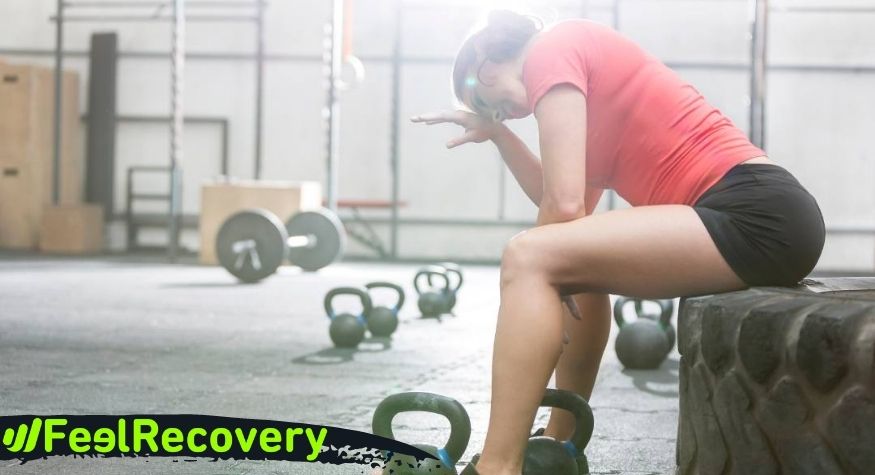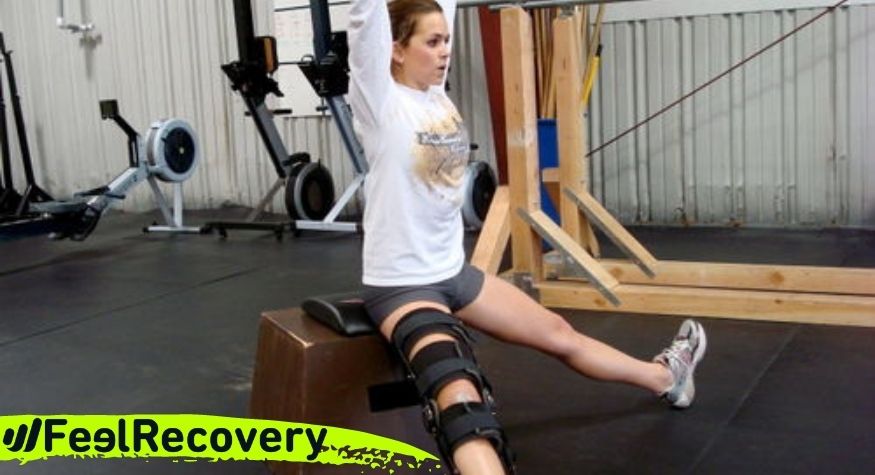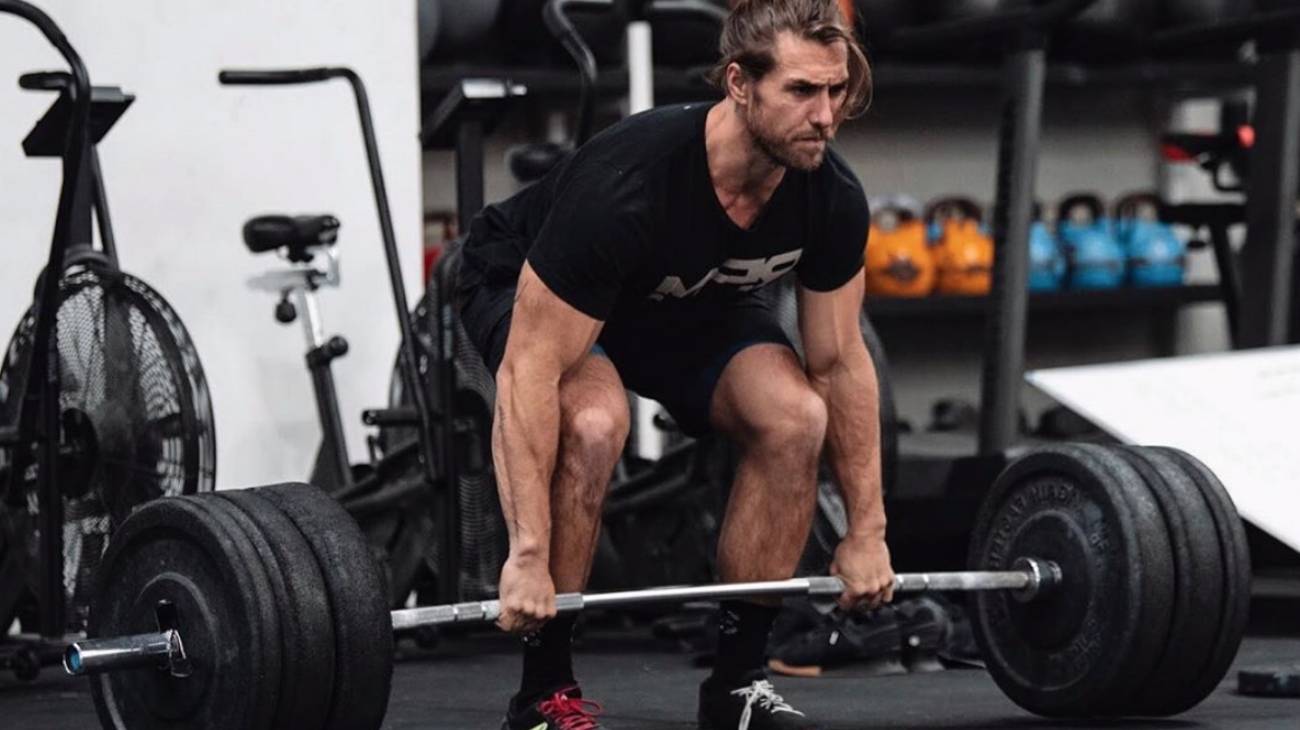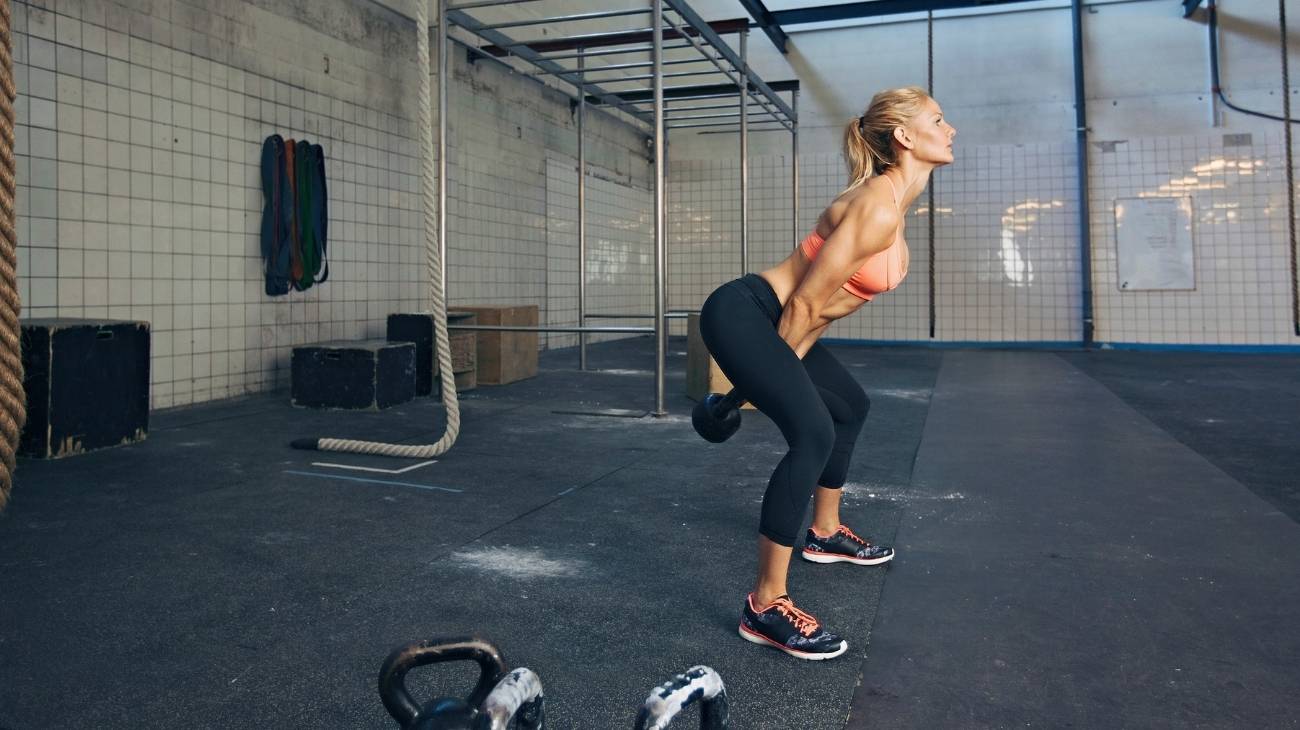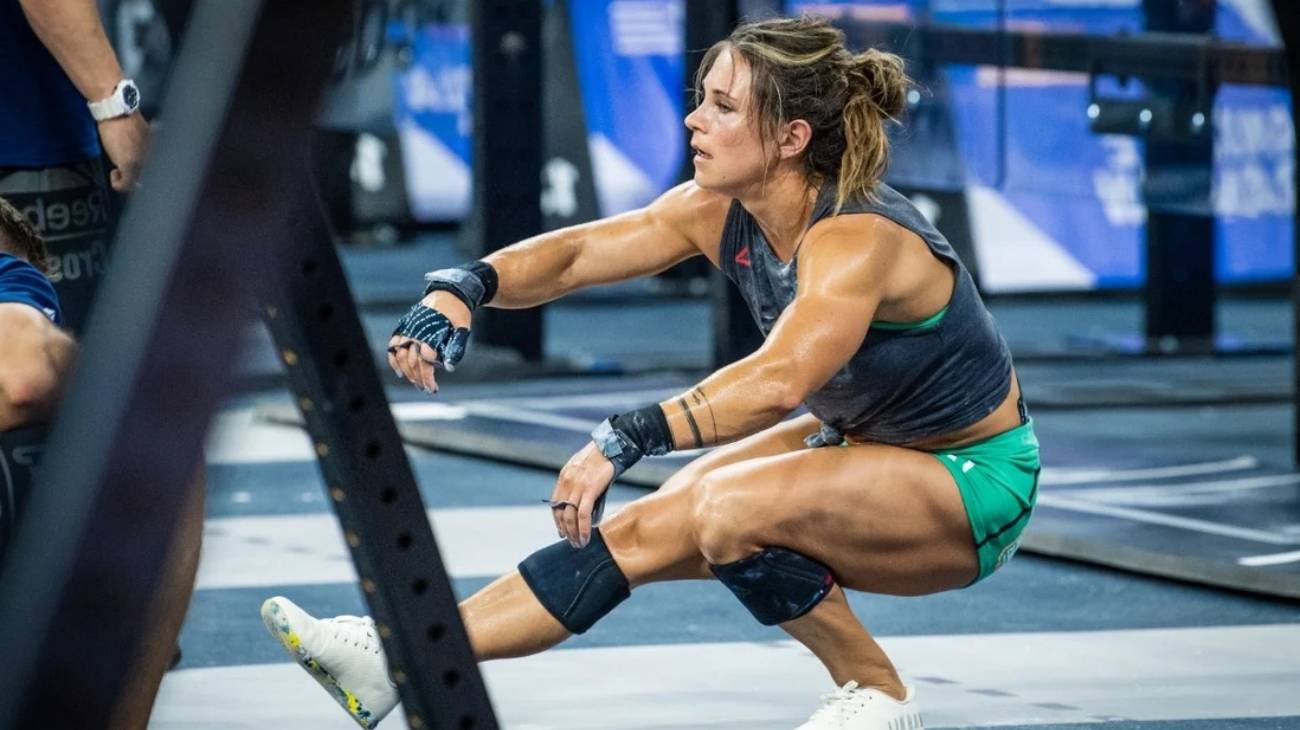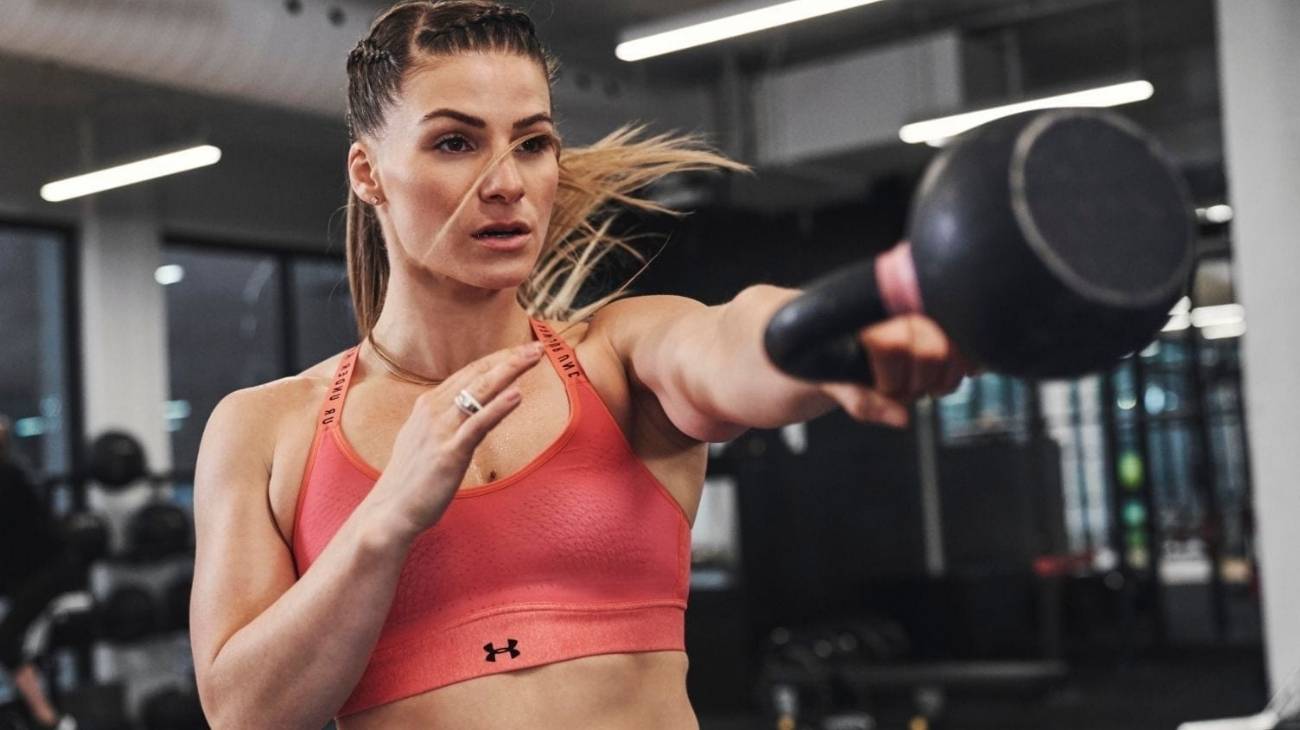Crossfit is a discipline that has increased in recent years the number of people who practice it. This sport makes the person take their body to a high intensity and a great physical effort due to the demanding nature of each session, so it is not recommended for beginners or people with a low physical condition.
Injuries in this type of practice tend to appear easily. Many of them, such as scoliosis, are caused by poor technique or adopting a bad position in the lumbar area, while others, such as tendonitis, can appear due to the use of unsuitable footwear. So in this article we will show you which are the injuries that affect Crossfit and how we can treat them.
What are the most common types of injuries when doing Crossfit?
If you practice Crossfit you should know that to achieve a higher performance you must give it your all. But giving more means that you have to push your body to its limit. So practising this discipline at a high level means being exposed to injuries that commonly occur.
In fact, studies reveal that the areas most prone to injury are: shoulders, lower back, knees, as well as others that occur less frequently, such as injuries to the calf muscles or wrists.
Here we will show you what are the types of pain among people who practice Crossfit:
- Lumbar pain: Lumbar pain is very common in crossfit, especially when we lift weights incorrectly. A bad lifting position can have serious consequences on our back, such as herniated discs. To avoid this type of injury, it is best to warm up for approximately 10 minutes, and we should not exaggerate the weight we lift.
- Shoulder injuries: Using poor technique when lifting heavy weights can be one reason why we commonly injure our shoulders, as they are not designed to carry as much weight as other areas of the body. That's why it's important to always maintain correct technique and keep your shoulders strengthened with a series of routines that will strengthen your rotator cuff and subsequently prevent injury.
- Knee injuries: Although it is a very stable joint, we must always keep them healthy, because the practice of Crossfit that requires a total demand of our body can cause our knee to suffer some damage, for example, when doing squats, running or jumping rope as the point of impact is given in that joint. The most common ailments are patellar tendonitis, sprains and meniscus and ligament damage.
- Wrist pain: The wrist is a small joint made up of bones, tissues and tendons. And we often overuse it when we are training, so it is normal for pain and discomfort to appear due to overuse. This is often caused by a bad grip on the bar or by starting to exercise without first warming up the area to be worked. Because the wrists are used in the grip exercises, it is important to have a good technique that does not damage our tissues or tendons in the wrists.
Best products for Crossfit injury recovery
Bestseller
-
2 Calf Compression Sleeve (Black/Gray)
£17,50 -
2 Calf Compression Sleeve (Green/Navy)
£17,50 -
2 Calf Compression Sleeve (Pink/Bordeaux)
£17,50 -
2 Elbow Compression Sleeve (Black/Gray)
£17,50 -
2 Elbow Compression Sleeve (Green/Navy)
£17,50 -
2 Elbow Compression Sleeve (Pink/Bordeaux)
£17,50 -
2 Knee Compression Sleeve (Black/Gray)
£17,50 -
2 Knee Compression Sleeve (Green/Navy)
£17,50 -
2 Knee Compression Sleeve (Pink/Bordeaux)
£17,50 -
2 Thigh Compression Sleeve (Black/Gray)
£17,50 -
2 Thigh Compression Sleeve (Green/Navy)
£17,50 -
2 Thigh Compression Sleeve (Pink/Bordeaux)
£17,50 -
Acupressure Mat and Pillow (Black/Gray)
£44,95 -
Acupressure Mat and Pillow (Green/Navy)
£44,95 -
Acupressure Mat and Pillow (Pink/Bordeaux)
£44,95 -
Acupressure Pillow (Black/Gray)
£21,52 -
Acupressure Pillow (Green/Navy)
£21,52 -
Acupressure Pillow (Pink/Bordeaux)
£21,52 -
Back Support Belt (Black)
£29,95 -
Back Support Belt (Green)
£29,95 -
Back Support Belt (Pink)
£29,95 -
Foot Massage Roller for Plantar Fasciitis (Black)
£17,50 -
Foot Massage Roller for Plantar Fasciitis (Green)
£17,50 -
Foot Massage Roller for Plantar Fasciitis (Pink)
£17,50 -
High Density Foam Roller for Muscle (Black/Gray)
£24,95 -
High Density Foam Roller for Muscle (Green/Navy)
£24,95 -
High Density Foam Roller for Muscle (Pink/Bordeaux)
£24,95 -
Ice Massage Roller Ball (Black)
£34,95 -
Ice Massage Roller Ball (Green)
£34,95 -
Ice Massage Roller Ball (Pink)
£34,95 -
Microwave Wheat Bag for Back Pain Relief (Extra Large) (Hearts)
£25,50 -
Microwave Wheat Bag for Back Pain Relief (Extra Large) (Oxford)
£25,50 -
Microwave Wheat Bag for Back Pain Relief (Extra Large) (Sport)
£25,50 -
Microwave Wheat Bag for Neck & Shoulder Pain Relief (Hearts)
£21,50 -
Microwave Wheat Bag for Neck & Shoulder Pain Relief (Oxford)
£21,50 -
Microwave Wheat Bag for Neck & Shoulder Pain Relief (Sport)
£21,50 -
Microwave Wheat Bag for Neck Pain Relief (Hearts)
£17,50 -
Microwave Wheat Bag for Neck Pain Relief (Oxford)
£17,50 -
Microwave Wheat Bag for Neck Pain Relief (Sport)
£17,50 -
Microwaveable Wheat Bag for Pain Relief (Hearts)
£17,50 -
Microwaveable Wheat Bag for Pain Relief (Oxford)
£17,50 -
Microwaveable Wheat Bag for Pain Relief (Sport)
£17,50 -
Pack 2 in 1: Foam Roller High + Soft Density (Black/Gray)
£24,95 -
Pack 2 in 1: Foam Roller High + Soft Density (Green/Navy)
£24,95 -
Pack 2 in 1: Foam Roller High + Soft Density (Pink/Bordeaux)
£24,95 -
Shoulder Support Brace (Black)
£21,95 -
Shoulder Support Brace (Green)
£21,95 -
Shoulder Support Brace (Pink)
£21,95 -
Soft Density Foam Roller for Recovery (Black)
£24,95 -
Soft Density Foam Roller for Recovery (Green)
£24,95 -
Soft Density Foam Roller for Recovery (Pink)
£24,95 -
Sport Compression Socks (1 Pair) (Black/Gray)
£17,50 -
Sport Compression Socks (1 Pair) (Green/Navy)
£17,50 -
Sport Compression Socks (1 Pair) (Pink/Bordeaux)
£17,50 -
Trigger Point Massage Stick (Black)
£12,95 -
Trigger Point Massage Stick (Green)
£12,95 -
Trigger Point Massage Stick (Pink)
£12,95
How to apply the RICE therapy to treat first aid injuries in Crossfit?
Crossfit, like any other discipline, requires a high level of concentration. In addition to this, it uses a lot of energy and physical effort that pushes our body to the limit. So having a good method to treat some injuries that may appear would be ideal.
That is why one of the best methods to treat injuries that do not require invasive methods is the "RICE therapy". The RICE therapy, which is currently known as the PRICE therapy (although the first is the best known) is a technique for treating injuries in athletes.
- Protection: by this we mean "shielding" the injured area either with a bandage or some other implement that protects the joint or muscle so that we avoid suffering another blow that could aggravate the injury.
- Rest: the injury should be rested for 36 to 48 hours so that the inflammation can go down and a clearer view of the blow can be obtained.
- Ice: You have seen how athletes after a blow, sprain, strain, sprain or contusion apply an ice pack. This is due to the benefit it brings to the injury. It is important to apply ice, as it helps with the swelling that appears after the injury.
- Compression: the injury should be covered with elastic bandages or a compression garment for the injured area, but we should not put too much pressure on it so that it does not cut off the circulation.
- Elevation: the affected area should be raised above the level of the heart, thus preventing the blood from circulating poorly in that area and reducing the bruising. It also helps to eliminate some of the pain and twinges.
Surgical treatments to cure serious or chronic injuries in Crossfit and strength sports
Injuries can appear in any area of our body, whether or not we do any sport. And although many of them are usually treated with different very functional therapies such as the RICE therapy, many of them can become complicated and surgery is necessary to treat them.
Here are some surgical treatments for different injuries:
Shoulder injuries
When shoulder injuries become a chronic problem, we will have no other option but to go to the operating theatre to solve it. The most common cases include the following:
- Surgery for bursitis: Surgery for shoulder bursitis requires general anaesthesia. This surgery can be done in two ways. The first is a closed surgery, where an instrument called an arthroscope is used, which has a camera inserted that will allow the damaged area to be seen in order to repair it. Two small incisions are made, one to insert the arthroscope and the other to insert the instruments to be used. The second option is an open surgery where a 5cm insertion is made in which the subacromial bursa is removed, widening the space in the area and providing a better view of the rotator cuff to be repaired.
- Repair of the rotator cuff: For the operation of tendinitis it is necessary to use anaesthesia, general or local. Depending on the degree of severity of the injury, the arthroscope will be used or not. In the case of severe surgery, the surgeon will make an incision where he will carefully move the muscles to repair the shoulder. Open surgery is performed when the tear is larger and much more serious
Back injuries
The back is the central part of the body, so it tends to accumulate a lot of tension over the years. Today there are effective methods to avoid having to undergo surgery, but in specific cases we must do so to avoid greater problems.
- Herniated disc removal: The surgery for herniated discs is discectomy, and hospitalisation is required. The surgeon applies general or spinal anaesthesia, then makes an incision in the back and proceeds to remove the damaged discs, locating the area with a microscope. Once the discs have been removed, they are stitched or stapled closed. Recovery is usually fairly quick and sometimes you can go home the same day of the operation.
Knee injuries
The knee is the joint that causes the most problems for anyone who practices crossfit and any other sport. Fortunately, most of them can be treated without surgery, but there are cases in which surgery is mandatory.
- Meniscal repair: The operation performed in these cases is meniscal arthroscopy, which involves making small incisions in the knee and inserting the arthroscope (which contains a small lightweight camera that allows you to see the damaged area through a monitor) and the necessary instruments to repair the meniscus. Recovery time can vary from 2 to 4 months, depending on the person and the severity of the tear.
- Repair of cruciate ligaments: To repair this rupture, surgeons introduce surgical lathes through small incisions and proceed to remove the damaged tissues and place grafts that hold the ligaments and then proceed to close the wound and bandage it.
References
- Klimek, C., Ashbeck, C., Brook, A. J., & Durall, C. (2018). Are injuries more common with CrossFit training than other forms of exercise?. Journal of sport rehabilitation, 27(3), 295-299. https://journals.humankinetics.com/view/journals/jsr/27/3/article-p295.xml
- Alekseyev, K., John, A., Malek, A., Lakdawala, M., Verma, N., Southall, C., ... & Ross, M. (2020). Identifying the most common CrossFit injuries in a variety of athletes. Rehabilitation process and outcome, 9, 1179572719897069. https://journals.sagepub.com/doi/pdf/10.1177/1179572719897069
- Ángel Rodríguez, M., García-Calleja, P., Terrados, N., Crespo, I., Del Valle, M., & Olmedillas, H. (2022). Injury in CrossFit®: a systematic review of epidemiology and risk factors. The Physician and Sportsmedicine, 50(1), 3-10. https://www.tandfonline.com/doi/abs/10.1080/00913847.2020.1864675
- Hopkins, B. S., Cloney, M. B., Kesavabhotla, K., Yamaguchi, J., Smith, Z. A., Koski, T. R., ... & Dahdaleh, N. S. (2019). Impact of CrossFit-related spinal injuries. Clinical journal of sport medicine, 29(6), 482-485. https://journals.lww.com/cjsportsmed/Abstract/2019/11000/Impact_of_CrossFit_Related_Spinal_Injuries.8.aspx
- Hak, P. T., Hodzovic, E., & Hickey, B. (2022). The nature and prevalence of injury during CrossFit training. The Journal of Strength & Conditioning Research. https://journals.lww.com/nsca-jscr/abstract/9000/the_nature_and_prevalence_of_injury_during.97557.aspx
- Meyer, J., Morrison, J., & Zuniga, J. (2017). The benefits and risks of CrossFit: a systematic review. Workplace health & safety, 65(12), 612-618. https://journals.sagepub.com/doi/pdf/10.1177/2165079916685568
- da Costa, T. S., Louzada, C. T. N., Miyashita, G. K., da Silva, P. H. J., Sungaila, H. Y. F., Lara, P. H. S., ... & Arliani, G. G. (2019). CrossFit®: Injury prevalence and main risk factors. Clinics, 74. https://www.scielo.br/j/clin/a/4FtbB77jTQtQgPmt4KrBjJy/
- Montalvo, A. M., Shaefer, H., Rodriguez, B., Li, T., Epnere, K., & Myer, G. D. (2017). Retrospective injury epidemiology and risk factors for injury in CrossFit. Journal of sports science & medicine, 16(1), 53. https://www.ncbi.nlm.nih.gov/pmc/articles/PMC5358031/
- Tafuri, S., Salatino, G., Napoletano, P. L., Monno, A., & Notarnicola, A. (2018). The risk of injuries among CrossFit athletes: an Italian observational retrospective survey. The Journal of sports medicine and physical fitness, 59(9), 1544-1550. https://europepmc.org/article/med/30421876
- Weisenthal, B. M., Beck, C. A., Maloney, M. D., DeHaven, K. E., & Giordano, B. D. (2014). Injury rate and patterns among CrossFit athletes. Orthopaedic journal of sports medicine, 2(4), 2325967114531177. https://journals.sagepub.com/doi/pdf/10.1177/2325967114531177

